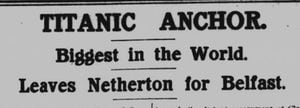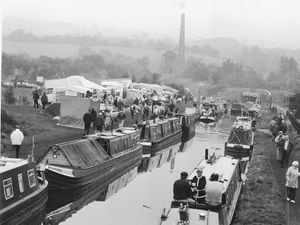Titanic's anchor: A remarkable part of Black Country history
Twenty shire horses pulled the world's biggest anchor – weighing a massive 16 tons – from the very beginning of its historical journey in the heart of Netherton.

It's Monday, May 1, 1911. Curious onlookers lined the streets of the Black Country and the air was buzzing with excitement and anticipation.
Little did they know that this marked the start of one of the most famous tragedies in modern history.
The anchor, which measured18ft, six inches in length and 10ft across, was made the for the Titanic at a firm in the heart of the Black Country.
Keen historian and self-professed ‘history influencer’ Sarah Haywood, who works as a teaching assistant at Brierley Hill Primary School, has been researching the story of the- then 'world's biggest anchor' and is sharing her finds from the British Newspaper Archives with Express & Star readers.
The mum-of-two, who runs the West Midlands Historic Chronicles - The Black Country and Beyond Facebook group, said: "Just imagine the hustle and bustle of that day, when 20 shire horses pulled the world's biggest anchor through Netherton. The streets were filled.
"It's incredible to think about the sheer effort and coordination it would have taken to move the anchor."



Remarkable part of Black Country history
The hefty weight was loaded onto a wagon and pulled through roads lined with curious onlookers. The destination was Dudley Railway Station. This was where the train responsible for transporting the anchor to Fleetwood, Lancashire awaited.
It was loaded onto to a 40-ton platform trolley before it arrived at the Titanic in Belfast on Friday morning at 5.30am on the R.M.S Duke of Albany.
The journey would take the anchor through Netherton High Street, to Cinder Bank, onto Dudley town centre and down towards Tipton Road and the goods yard.
Its final journey to the shipyard was again pulled by horses.
An article reported on the arrival of the anchor to Belfast. It read:





